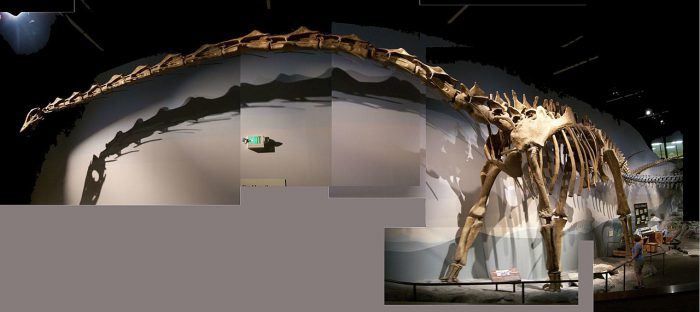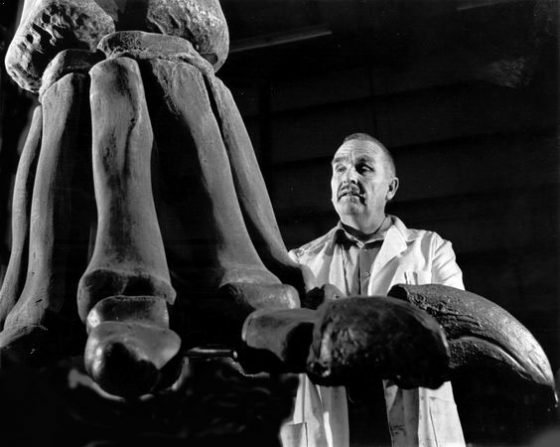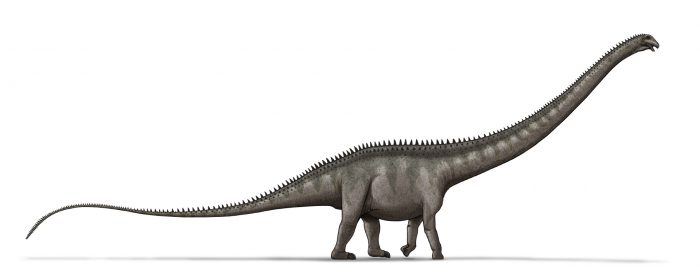Names. Some of us love the ones that we have. Others? Well, let's just say that we sort of wish we were around when the naming was happening because we have better ideas!
Supersaurus was decidedly not around when humans got around to naming it. The dinosaur went extinct in the Jurassic period, some 150-odd million years ago! But if it was still here, we think that it would've approved of its title.
SUPERsaurus. Dynamic. Bold. And, as it turns out, extremely accurate, too.
According to a brand new study, scientists say that Supersaurus was the longest dinosaur to have ever lived. Its length was at least 39 metres (128 feet) and could have been as high as 42 metres (137 feet). That's longer than three school buses back-to-back!
Getting a decent skeleton

Sure, this Supersaurus skeleton looks complete, but it—and most other fossils on display—are made of cast bones based on other fossils and similar living things. (Wikimedia Commons)
Supersaurus was first discovered in 1972. So what has changed? Why has it taken 50 years to get to this point? In short, working with fossils is hard work, and we're not even talking about the digging part. Once the bones are unearthed, the really tough work begins.
Figuring out what you've got.
As we've talked about in this video, fossils are actually a really rare thing. Only an extremely tiny fraction of living things die in the exact settings that will allow them to be fossilized. And the entire skeleton almost never survives the millions of years as a complete specimen—that goes triple for the longest land animal that ever lived! Getting a decent skeleton is really a matter of luck.
When the remains of Supersaurus were first found in Dry Mesa Dinosaur Quarry in Colorado, not only was it as an incomplete pile of bones, researchers initially thought that it contained the remains of three dinosaur species: Supersaurus, plus two more, Ultrasauros and Dystylosaurus.
Time for a correction

Jim Jensen initially saw this foot as belonging to Ultrasauros. Now a new paleontologist says that it is Supersaurus. (Wikimedia Commons)
This news sent excited shock waves around the paleontological world. But it also brought criticism. The more other experts looked at the fossils, the more they questioned whether they were really left behind by three different dinos.
This debate has raged for decades. It has now led us to Brian Curtice, a paleontologist at the Arizona Museum of Natural History. He is the man behind this new study that claims to have answered the puzzle. The pile of bones from Colorado? It was all Supersaurus all along!
The reason for the mix up? The original digger who found the bones—Jim Jensen—wasn't a trained paleontologist, and so he made some mistakes in his analysis. For example, one key bone had cracks in it that made it appear longer than it was. If you squeezed it 'back together', then it was more obviously connected to the rest of the Supersaurus bones.
Of course, Curtice's own work still needs to be peer reviewed (looked at by other experts), but it's looking good for Supersaurus. After 50 years, it is officially living up to its grand name!
For more fun long dinosaur content, be sure to revisit this photo gallery of the time that we watched a Diplodicus being built!
 A life restoration, or drawing based on science, of the Supersaurus. (Wikimedia Commons)
A life restoration, or drawing based on science, of the Supersaurus. (Wikimedia Commons)









